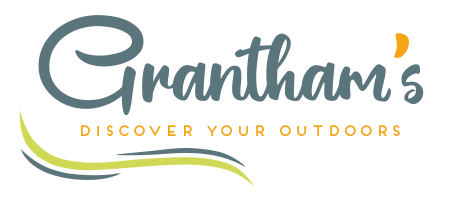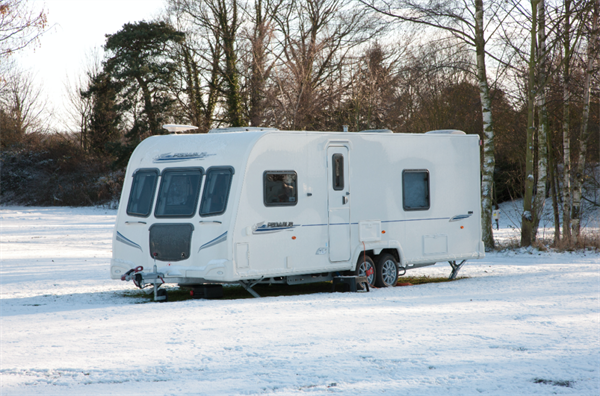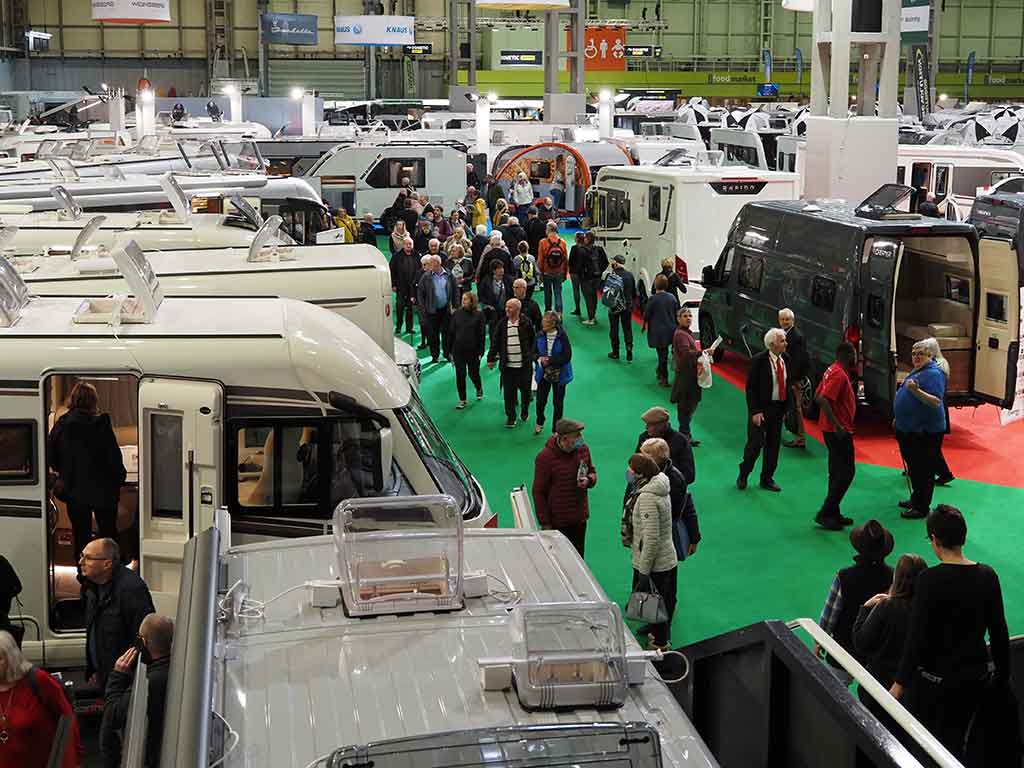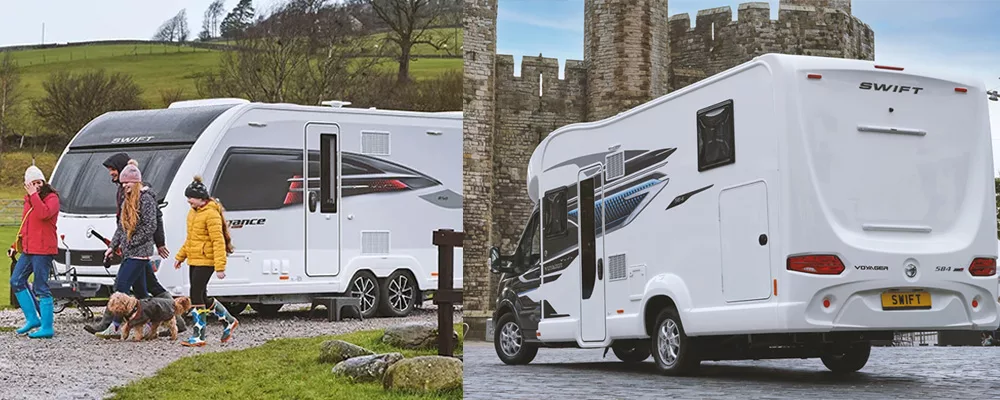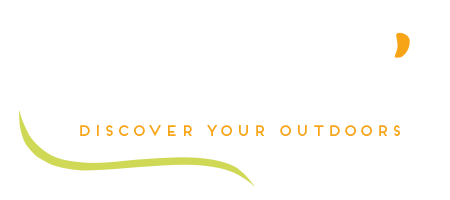Caravan jargon and terminology can be quite confusing for many of us, even for those who have been caravanning for years. Like, what does MTPLM actually mean and do I really need to know what it means? Well, to make it easier for us all we have created a caravan glossary to help simplify and help us understand what all of us caravanners are talking about.
So whether you’re new to caravanning or a seasoned caravaner touching up on the caravan vocabulary, then you’re in the right place.
Take a dive into our glossary below, listed in alphabetical order.
Caravan Glossary
A B C D E F G H I J K L M N O P Q R S T U V W X Y Z
A
A frame – Also known as the towing A-Frame, it is the triangular shaped section, positioned at the front of the caravan where the hitch head begins and attaches to the front of the caravan.
AL-KO ATC – An electronic, emergency control system to help stabilise the caravan whilst towing. This helps prevent the caravan from snaking when towing. Also known as Assisted Trailer Control.
Alde – A brand known for its caravan wet central heating system.
Awning – A tent like structure that attaches to the side of the caravan with the use of the awning rails. It extends the living space of the caravan. You can find different types of caravan awnings, they can either be held up by poles or air for air awnings.
Awning rail – The rails on the caravan that attaches the awning to the caravan by sliding the awning through the rail, holding it into position.
Aquaroll – A well known brand of water container used to carry fresh water to the caravan.
Axle – A central shaft for a rotating wheels. Caravans are manufactured with either single or twin axle. Generally, single axle caravans are commonly smaller and lightweight, whilst twin axles are typically larger and heavier.
B
Bailey – A UK caravan manufacturer trading since 1947 as Bailey Of Bristol. Some of their recognisable ranges are Pageant, Pegasus and Unicorn.
Bed Boxes – Storage areas located under the seating areas of the caravan.
Berth – Designated sleeping area in a caravan e.g 4 berth = upto 4 people can sleep in the caravan.
Blown Air – A caravan heating system distributing warm air throughout the caravan using fans that are surrounded around the caravan.
Breakaway Cable – A thin flexible steel wire that is usually coated in a red plastic coating, attached to the caravan and wraps around the cars tow bar. A safety device, in the event that the caravan disconnects from the cars tow ball whilst towing, the breakaway cable will apply the brakes on the caravan to prevent serious damage with the caravan free rolling.
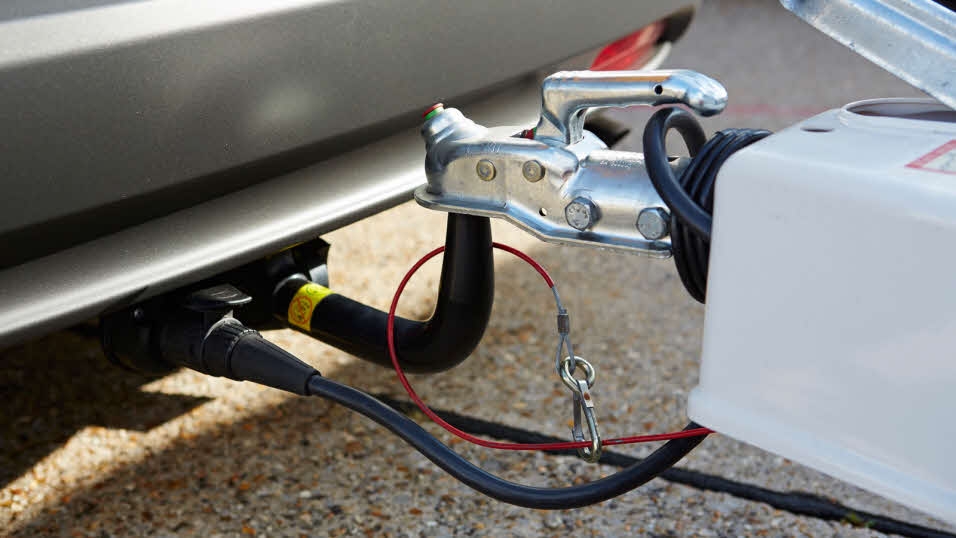
C
Caravan mover – Also known as a motor mover, it is remote controlled device that helps to maneuver a caravan when a car isn’t attached. A motor mover maneuvers the caravan without using manual handling, preventing injury and can come in automatic and manual options. Automatic caravan motor movers, allows the motors rollers to engage with the caravans tyres with the push of a button, whereas a manual motor mover will need the intervention of a winder to engage the rollers to the tyre to then maneuver the caravan.
Cassette toilet – A toilet built into the van to collect deposits. Most of the time can be emptied from the exterior of the caravan which can be taken to a waste area to dispose of the ‘goods’. One recognisable brand of a toilet cassette is Thetford.
CL (Certified Location) – Locations limited to 5 or less caravans or motorhomes for exclusive to members of Caravan & Motorhome Club.
CS (Certified Sites) – Sites limited to 5 or less caravans or motorhomes for exclusive to members of Camping & Caravanning Club.
CRIS – Central Registration and Identification Scheme. A national register for UK manufactured touring caravans. The scheme assists people each month to make informed decisions about buying or selling a caravan. Used to identify touring caravans most notably in the event of theft.
CRIS number – A unique 17 digit number made up of numbers and letters. It is usually displayed on a VIN chip stocker on the inside of the caravans front window. It tells CRIS certain information about the carvaan such as who manufactured the caravan, when it was manufactured and the caravans serial number.
Coachman – A UK caravan manufacturer based in Hull. Some of their recognisable ranges are VIP, Laser and Lusso.
Control panel – A panel of switches that is usually positioned above the habitation door, that control various operations throughout the caravan. These operations can include; lighting, heating, mains power, water pump and stereo.
Corner steadies – Also known as stabiliser legs or most commonly, legs. Each caravan consists of 4 corner steadies which helps stabilise the caravan and level it when pitched up. With the help of a steady winder the legs wind up and down and are positioned in each corner of the caravan. Can get these in automatic self-levelling options, so you don’t need to manually wind the legs down, instead with a touch of a button the legs will come down and stabilise the caravan itself.
D
Dinette – A dining area that converts into a bed / sleeping area
Double Dinette – A dining area that is usually positioned at the rear of the caravan as well as the front that converts into a bed / sleeping area.
E
EHU – Electric hook up. It is a cable usually red / orange that connects with the electric hook up post and connect to the socket in the caravan to generate power into the caravan.
Elddis – A recognisable UK caravan manufacturer owned by Hymer.
F
French Bed – A double bed that is positioned against a side wall, mostly placed lengthways.
Fresh water carrier –A container that is located outside of the caravan which contains fresh water that is pumped into the caravan when appliances such as taps are being operated. A popular fresh water container brand is Aquaroll and is a regularly used term when referring to a caravans fresh water container.
Front locker – The lockers that are positioned at the front of the caravan.
G
Gas BBQ point – An exterior point mounted to the exterior of the caravan where you can connect a gas BBQ that will run off the caravan’ gas supply.
Grab handles – Handles that are located on all 4 corners of the caravan to help maneuver the caravan manually.
H
Heiki – A well known brand for its caravan rooflights. Fitted in most modern caravans and are usually fairly square in shape.
Hitch head – Also, known a hitch head coupling. The device on the front of the caravan that attaches the caravan to the towball on the car.
Hitch lock – A security device that is positioned on the caravans hitch head to help prevent theft.
Hookup – A term used to refer to connecting the caravan to the mains electrics, also known as EHU (Electric Hook Up).
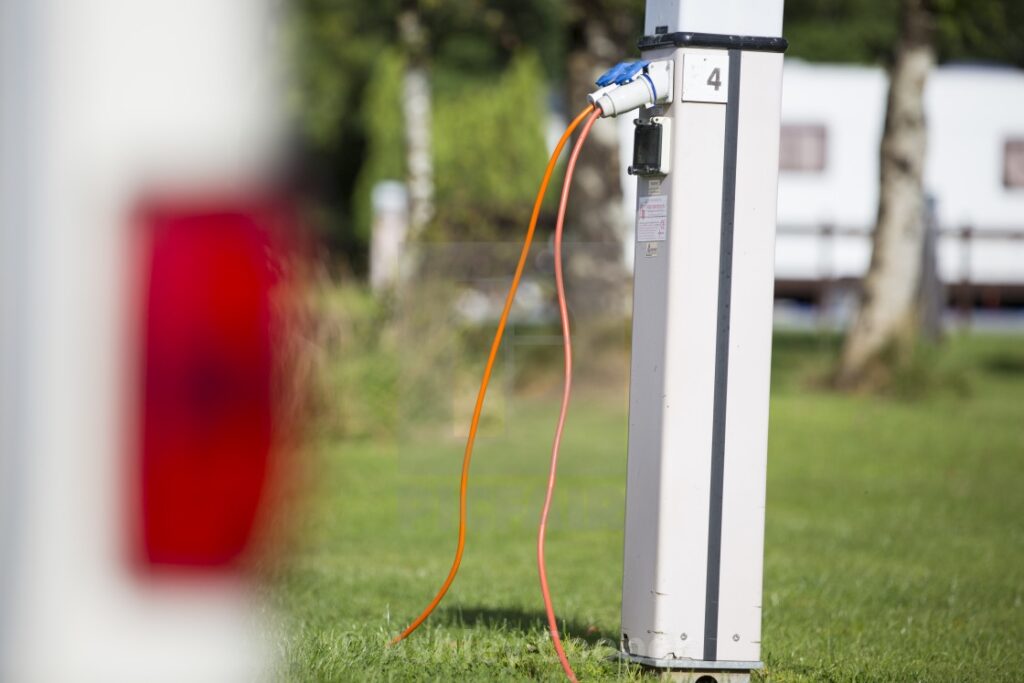
I
Island Bed – A double bed that is positioned away from any walls and can get around it with ease.
J
Jockey wheel – A wheel-based mechanical system used for steering or guidance. Located on the front of the caravan through its A frame. Helpful when maneuvering the caravan and lifting the nose of the caravan up to help hitching the caravan to the cars tow ball.
K
Kerb Weight –The total weight of the tower as it stands. This is the weight without any luggage or passengers.
Knaus – Knaus are a German caravan manufacturer, highly recognised in the European market.
L
L-Shaped Lounge – The front seating area (usually 2 parallel benches) are shaped as an L shape.
Laden Weight – The maximum loaded weight of a caravan, this figure is deemed to be safe to load the caravan to. Also referred to as maximum technical permissible laden mass (MTPLM).
Layout (floorplan) – The configuration of the fittings and furniture inside the caravan
Leisure battery – A power source for 12v appliances and equipment in a caravan. It provides a steady amount of power to the caravan appliances and can be charged up when it is coupled to the electric hook up.
Lunar – A well known, UK manufactured who no longer manufacturer caravans but are still known for their caravans such as Alaria, Clubman and Quasar.
M
MTPLM – Stands for Maximum Technically Permissible Laden Mass, this is determined by the manufacturer, and this figure is deemed to be safe to load the caravan to. It is the maximum weight that the caravan can be including any accessories and other belongings. You can usually find this information on the caravans habitation door.
MiRO or MRO – Mass in Running Order. Caravan mass as equipped to the manufacturer’s standard specification.
N
NCC – National Caravan Council. The UK trade body for the tourer, motorhome, and caravan holiday homes and residential park home industries. Represents the supply chain in the industry and governs its policies.
Nearside – The side of the caravan that is closest to you as you walk in the door.
Noseweight (caravan) – The downward force of your caravans coupling / hitch head on your car’s towball, and it’s an important element to consider when choosing a towbar. Not measuring your nose weight could cause severe problems and be dangerous to tow if too low or too heavy.
Noseweight (car) – The maximum nose weight your car can cope with and is an important factor to consider when towing and packing the caravan.
Noseweight Gauge – A device that helps you measure and check the caravans nose weight to prevent you from going over the noseweight limit.
O
Omnivent – A rooflight / extractor fan that allows you to fill your caravan with plenty of fresh air and daylight, no matter what the weather.
Outfit –A term referred to when describing the caravan and towcar match.
P
Payload – The allowance the user works with when packing the caravan. The weight difference is between the loaded weight (MTPLM) and the unloaded weight (unladen weight / MRO).
PDI (Pre Delivery Inspection) – A check that each caravan gets before it leaves the workshop to be sold. It goes through AWS approved standards to check for thing like damp and make sure it is safe and habitable.
Pitch – A dedicated slot on a site to park the caravan.
Porch awning – A tent like structure that attaches to the side of the caravan through the caravans awning rails. Unlike a full caravan awning, a porch awning only covers part of the caravan.

Q
Quasar – A popular model within the Lunar range. The Quasar was a popular flagship range for Lunar for over 20 years, with the last Quasar manufactured in 2019/20.
R
Rear Island Bed – A double bed that is positioned away from any walls and can get around it with ease. This bed is positioned at the rear of the caravan and you usually find a washroom positioned in the centre of the caravan in between the front lounge and the bedroom.
RV (Recreational Vehicle) – A motorised vehicle or trailer which include living quarters designed to accommodate.
S
Seasonal pitch – A pitch on a campsite that is reserved for a caravan for the season. It is a plot that allows a caravan to left on the plot for 6 – 7 months of the year.
Shipping length – The total length of the caravan including the caravans towing A-Frame.
Snaking – An unstable motion when the caravan is being towed. This can be cause by heavy winds, overtaking vehicles or driving at high speeds.
Stabiliser – A safety device that helps stabilise the caravan whilst towing and is positioned to the hitch head of the caravan. It helps prevent snaking and a popular brand who manufactures this type of product is AL-KO.
Swift – A major caravan manufacturer in the UK based in Hull. Swift are known for its caravan ranges such as Challenger, Elegance and Sprite.
T
Torque –Tension setting for caravan wheel nuts. After you have driven for 20 to 30 miles or for about 30 minutes stop and check the torque.
Tow Ball – The metal ball that is positioned on the end of the tow bar on the rear of a car. A crucial part of towing where the caravans coupler connects up to the car.
Transverse Island Bed – A double bed that is situated across the caravan which you can get around the bed without the obstruction of a side wall.
Tyron Bands – Added protection for flat tyres. A band fitted to the wheel to hold the wheel together, preventing the tyre dropping into the fitting well in the event of a puncture or blowout. This allows the deflated wheel to be steered allowing the vehicle to proceed to a safe location when a puncture / blow-out occurs.
Twin Axle – A central shaft with 4 rotating wheels, 2 wheels on either side of the caravan. Advantages of twin axles is that you can have a greater payload, commonly more living space and greater stability when towing.
U
U-Shaped Lounge – The front seating area (usually 2 parallel benches) are shaped like a U shape.
Unladen weight – The weight of the caravan when not carrying any goods or burden. This weight is inclusive of the body and all of the parts which are necessary to caravan. Also, known as the empty weight of the caravan.
V
Vanmaster – A UK caravan manufacturer based in Wigan, established since 1995.
W
Washroom – The area of the caravan that usually includes the toilet, shower and wash basin.
Waste water carrier – A container positioned on the outside of the caravan that collects any water waste from the caravan. This is sink / shower waste, not toilet waste. A recognised brand is Wastemaster and is regularly term used when referring to waste water container.
Water Pump – Pumps the water from the tank to the points of consumption within the caravan.
Water ingress – A term used when referring to water penetrating the body of the caravan, causing damp. Many new caravans provide a water ingress warranty in the event that if any damp occurs, the owner is covered by the manufacturer.
Wet Central Heating – A caravan heating system that operates in the same way as household central heating system creating hot water for you taps and heat for your radiators. Been reviewed by caravanners as conducting heat more efficiently. Other heating systems are blown air heating.
Wet locker – A storage area that is used to store ‘wet’ items such as coats, boots and is usually accessible from the caravans exterior.
Wheel lock – Similar to car wheel locks, applied to the caravans wheels to help prevent theft.
Window stays – Telescopic poles and catches to hold the caravan windows open.
X
Xplore – A UK caravan manufacturer owned by Erwin Hymer Group.
Y
YES! – The sound all caravanners make when they pull up on a campsite.
Z
Zzzzz – And relax, that’s enough jargon for one day.
Well there we have it. Some of the most common terminology used within the caravan industry. If there is something that isn’t listed on here, that you still don’t know the meaning of it, then feel free to contact us and we’ll be more than happy to explain.
